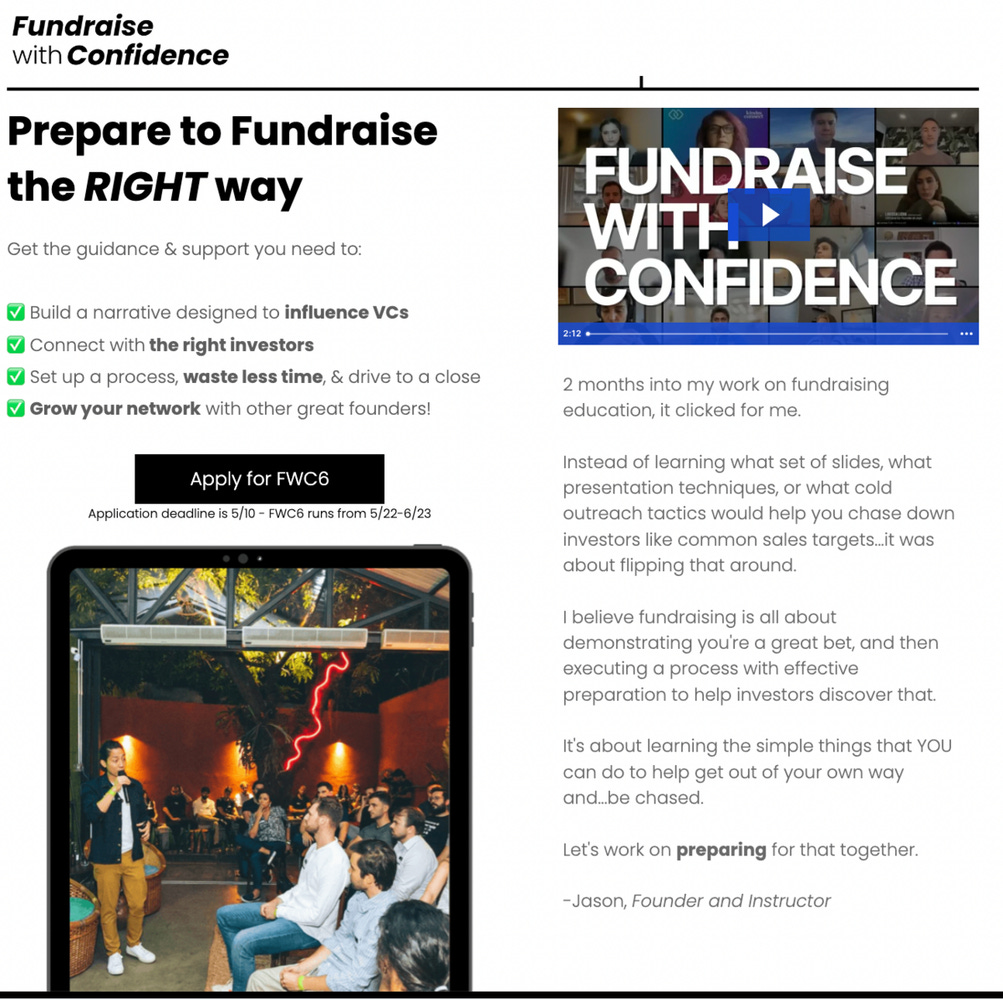Uncapped SAFEs: when to use them, no cap
Before we get to this week's post...
I’m getting excited about the next cohort of my fundraising accelerator program. If you haven’t checked it out– I’d love for you to read about it→ fundraisewithconfidence.com
The 5-week program starts Monday, May 22.
Applications are due on May 10!
…and now on to this week’s fieldnotes
A founder asked me the other day “are there any problems with uncapped SAFEs?” The short answer is yes, absolutely. The more accurate response requires some nuance, so I told him he’d get his answer in the next issue of this newsletter.
First - what’s a SAFE?
A SAFE is a Simple Agreement for Future Equity. SAFEs, as I've described in the past, are a way to take on investment dollars with fewer legal requirements and documentation (and in turn less time and money) than a traditional equity round.
When you invest in a SAFE, you technically do not own equity (the thing that could be sold for actual dollars/profit down the road) until a future round of funding is raised. The SAFE says that when the equity round is raised, the SAFE investment converts into equity at some agreed upon terms. Those terms usually include a VALUATION CAP and a DISCOUNT which determine what price is used to calculate the amount of equity an investor gets.
The valuation cap and discount are there to address two scenarios:
The value of the company going up
The value of the company going down
Take the hypothetical situation of a company raising money using a SAFE with a $10MM pre-money valuation cap and a 20% discount.
The $10MM valuation cap defines the highest value that can be used to calculate the conversion of a SAFE investment. So, if the company goes up after the investment is made, the investor will convert at the valuation cap. For all intents and purposes, a valuation cap is essentially a proxy for valuing the company today. In other words, it would be like the investor negotiated an equity investment where the company was valued at $10MM.
FUN FACT: For the past 5 years, the discount was considered a strange component of SAFEs that were included out of tradition. They never really came into play because companies would either raise money at higher valuations or go out of business. There was really no in between. We’re about to see them finally get their time to shine (not actually a good thing…). With SO many companies raising money on SAFEs with astronomical valuation caps over the last 2 years, there will be tons of companies forced to raise money at valuations below the last cap…
So at that valuation cap of $10MM, if the company raised its next round at a $5 million valuation, SAFE investors would convert at a $4MM price ( 20% lower $5MM).
Now that you have the background, I can drop the no cap knowledge (awesome incorporation of slang, amirite?). An uncapped SAFE as you might expect from its name, is a SAFE without a valuation cap 🚫🧢. Without a cap, the only feature that determines the conversion price of a SAFE is a discount. That means whether the value of the company goes up or down, an investor always converts at a discount to the next round valuation…no cap :).
Why uncapped SAFEs?
For founders, it lets you avoid the time and brain damage that comes from setting a valuation. Negotiations can be uncomfortable and there are some situations where it could be helpful to avoid revealing your valuation to the market.
The bigger value to the founder occurs if they can use the money invested on an uncapped SAFE to grow the value of the company tremendously. Remember, even if the company skyrockets in value, the investor just gets a set discount…again, no cap.
Here’s the money scenario for founders– (continue reading....)
Small asks!
If you thought this was helpful or enjoyable in anyway, I’d love for you to:
Forward this newsletter with others who would enjoy it
Follow me on Twitter where I’ve begun building in public (my course, my podcast, etc)!
Listen with a friend to Funded, my podcast that tells the rollercoaster stories of how founders raised millions (and subscribe🙏)
Ask me your fundraising questions so I can help you and cover them in a future issue





